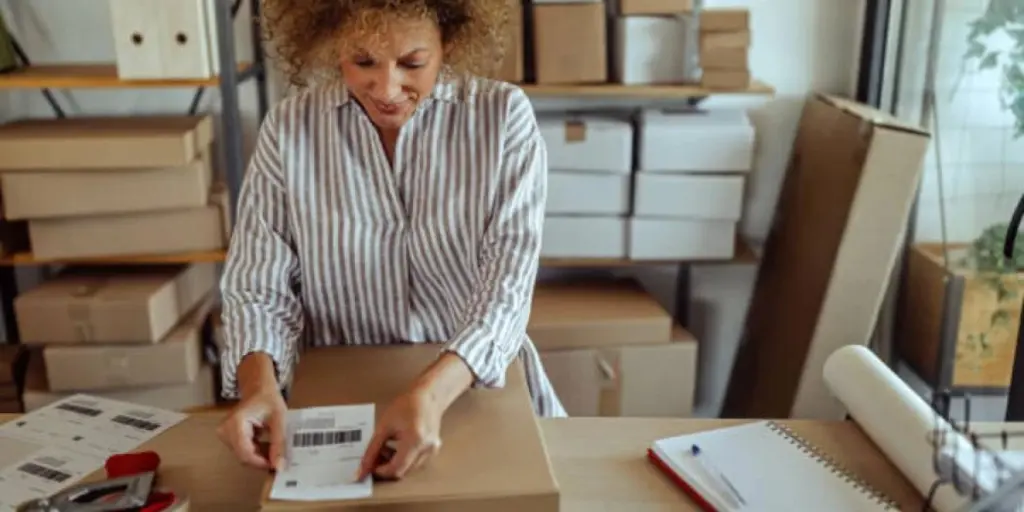A product’s packaging significantly influences how consumers relate to the product and the business. Packaging combines materials, colors, themes, texts, and other design components to project a brand’s values and connect with consumers.
In addition, product packaging is an excellent way to inform clients, raise their expectations and then meet those expectations. For this reason, it’s an important aspect that demands a retailer’s attention. This article explains the factors to consider when creating packaging for products.
Table of Contents
How big is the product packaging market?
Five things to consider before selecting product packaging
Finishing thoughts
How big is the product packaging market?

Product packaging is a massive sector of the global economy driven by the desire to make life more convenient. It includes marketing initiatives, research and design processes, and technology for making products available to consumers.
According to Smithers, the global packaging market increased from $843.8 billion to $914.7 billion between 2015 and 2019. Further, it’s projected to reach $1.13 trillion by 2030.
The fast-moving consumer goods industry continues to see a rise in businesses increasing their reach globally and becoming digitalized.
Consumers are primarily interested in packaging that simplifies their lives. Younger age groups are particularly inclined to shop for groceries more frequently and in smaller quantities due to the shift to single-person living. This has increased demand for more practical, smaller-sized formats and fueled growth in the convenience store retailing sector.
The switch from high-volume, single-use items that generate waste to alternative materials presents businesses with better ways to connect with their audience. The movement pushes brands to create and invest in plant-based plastics while adopting and recycling enhanced waste processes to demonstrate their environmental commitment.
Still, the demand for plastic packaging remains high as more people consume food, beverages, medicines, and similar goods on the go. Other factors expected to influence this rapidly expanding market over the coming years include technological advances, regional patterns, trends in end-use products, and the dynamic brand and retailer landscapes.
Five things to consider before selecting product packaging
Available capital

How much would it cost? How much is available? These questions pertain to the actual packaging, the design process, and distribution costs. The available capital significantly determines what businesses can and can’t do. Weighing the costs and defining the spending limit can help guide the selection process.
While factors like design work and printing are one-time costs, materials & labor are per-time expenditures. Some packaging materials can be costly depending on the product type or industry. Also, the cost of custom packaging is difficult to determine as individual preferences can vary widely.
Investing a little bit more in packaging development could help increase visibility and improve the products’ presentation and selling price. Consumers don’t mind paying extra for premium packaging.
However, remember that expensive doesn’t always mean high quality, and cheaper isn’t always worse. So, optimize available capital by going for cost-effective and convenient options. It makes packaging and shipping a lot easier and saves money on packaging expenses.
Transport medium
Another factor to consider is the lifecycle of the products. Businesses must ask a few questions: How will the products get to the consumer? Will they be sold online and shipped? Or will they be displayed in retail stores? More importantly, will they move to the final destination by air or road?
All these factors affect the package’s condition before it reaches the final consumer. Although aesthetically pleasing packages are excellent, goods must get to the buyers intact. This is the primary reason for packaging.
Consumers don’t want to find broken contents when opening their packages. It’s a massive loss for both parties if the product gets damaged during distribution. For this reason, a product’s packaging must be conducive to the transport medium, ensuring it stays intact.
Packaging sustainability and materials
Eco-friendly materials are fast becoming a leading concern to consumers. However, this largely depends on the product sold and the brand’s style.
Paper packaging is eco-friendly and offers several customization options, but it’s better suited for dry goods. Liquids and food items require special packaging. Plastic or metal is ideal for products with longer shelf lives.
While brands should consider ways to make packaging more sustainable, understanding the differences between various options is critical. Sustainable materials may cost more, but they’re worth investing in.
Ideally, the material of choice should naturally flow into the brand’s production cycle. It should also be compatible with the equipment used in packaging and every storage and distribution medium. And it must be durable enough to withstand all these processes.
In addition, the product’s size and weight will determine the perfect packaging material. Heavy or fragile products will need durable materials like corrugated boxes, while paper or poly bags will suffice for lightweight products. Glass or ceramic products may require inserts or fillings for added security.
Although capital is a significant determinant, it’s not an excuse to use low-quality or inappropriate materials. Businesses must strike a balance between costs and quality as choosing premium materials may save costs in the long run.
Considering package sustainability and materials will help prevent pitfalls like product recall or refunds that negatively impact the brand’s finances and reputation.
Packaging size
A package’s size must be proportionate to the product inside it. Packaging for small and large items differs significantly. Consumers find large containers with tiny contents annoying. Also, businesses with precise-size packaging will use lesser resources and limit the damage.
Products sold online and shipped shouldn’t have packaging with a lot of space. The extra space may scatter the product’s arrangement or lead to unwanted damage during transport. It’s recommended that products moving from one point to another have packages that fit their sizes.
Product size also determines if businesses can use pre-made or custom packaging options. Alternatively, businesses with multiple product sizes can select two sizes that work for all.
Branding and design

A brand’s product presentation is the primary point of contact with its target audience, and it determines the final results of the buying process. Ideally, the packaging must draw customers’ attention, communicate a message, and persuade them to purchase the product.
A well-designed package informs buyers about the brand’s values and also attests to the integrity of the product it contains.
Identifying the target market before beginning the packaging design is crucial in developing the packaging plan.
Every packaging design element, including the components and color schemes, must reflect the contents and the brand. While older target customers may require enlarged text, beauty products will require attractive packaging. Also, green and brown colors work wonders for nature-focused products.
Also, work at creating an unboxing experience that delights and excites. Customers place a high value on useful and practical packaging. Therefore, select materials that are user-friendly for easy opening.
Finishing thoughts
It’s incredible what effective packaging can do for businesses. It’s an opportunity for businesses to connect with their target audience and reinforce their brand.
Companies can benefit from the influence of packaging for products if they weigh the costs, factor in transportation & distribution, choose durable, eco-friendly, high-quality materials, and use the right-sized packaging.




